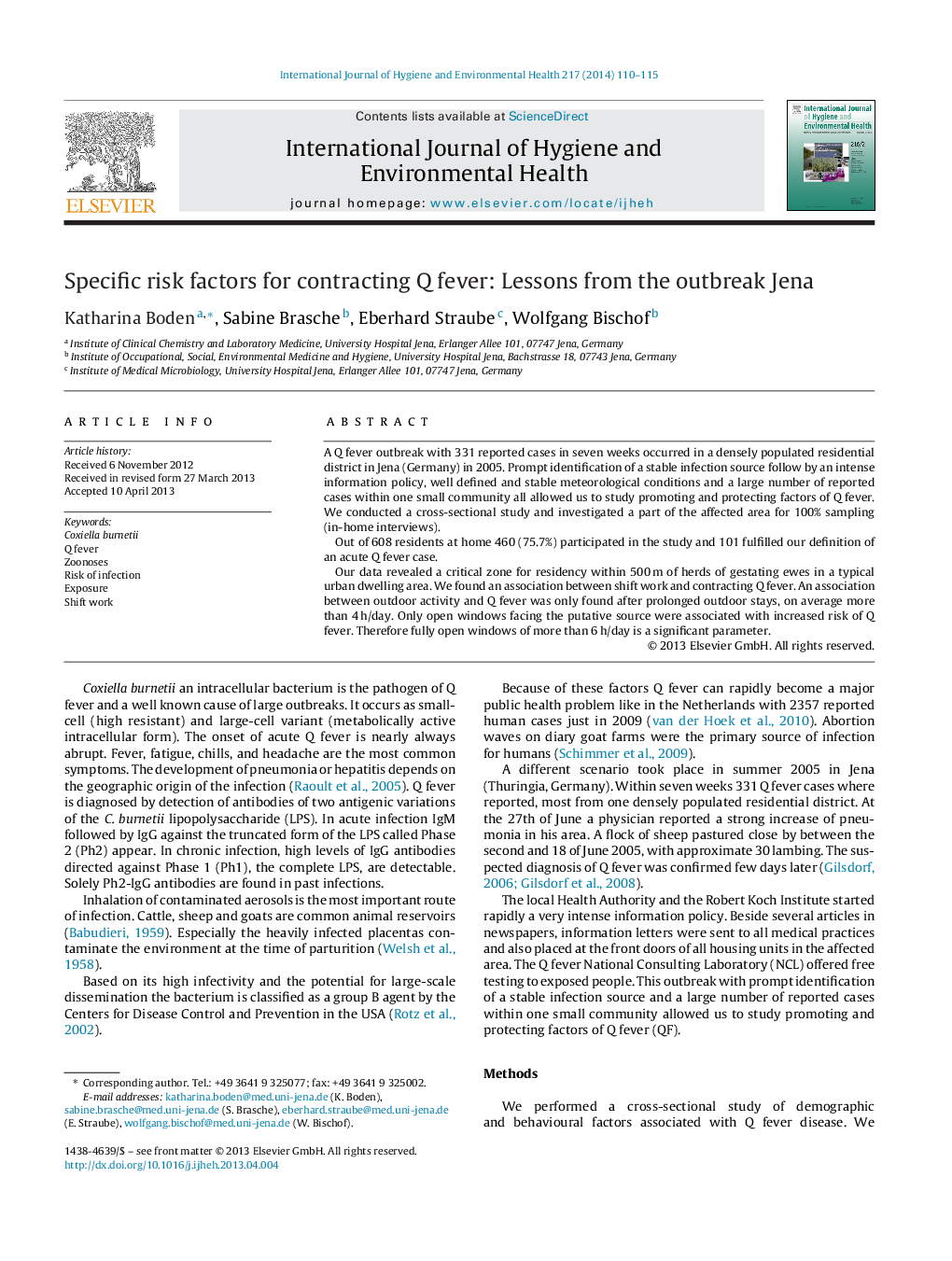| Article ID | Journal | Published Year | Pages | File Type |
|---|---|---|---|---|
| 2588538 | International Journal of Hygiene and Environmental Health | 2014 | 6 Pages |
A Q fever outbreak with 331 reported cases in seven weeks occurred in a densely populated residential district in Jena (Germany) in 2005. Prompt identification of a stable infection source follow by an intense information policy, well defined and stable meteorological conditions and a large number of reported cases within one small community all allowed us to study promoting and protecting factors of Q fever. We conducted a cross-sectional study and investigated a part of the affected area for 100% sampling (in-home interviews).Out of 608 residents at home 460 (75.7%) participated in the study and 101 fulfilled our definition of an acute Q fever case.Our data revealed a critical zone for residency within 500 m of herds of gestating ewes in a typical urban dwelling area. We found an association between shift work and contracting Q fever. An association between outdoor activity and Q fever was only found after prolonged outdoor stays, on average more than 4 h/day. Only open windows facing the putative source were associated with increased risk of Q fever. Therefore fully open windows of more than 6 h/day is a significant parameter.
